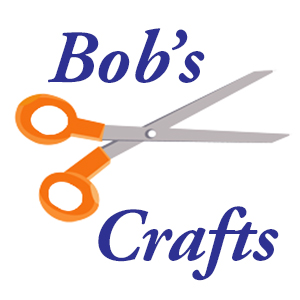Backstrap Loom
The backstrap loom is a very ancient type of weaving device, and it is still in use today. In primitive societies the backstrap loom provides a weaving device at very little cost. It is very portable. It can be set up and used almost anywhere.
This project is rated: MODERATE
Materials needed:
- 12, or more, Craft Sticks
- Drill with small bit
- Yarn, thread, or string in an amount for both your warp and weft
- Small cardboard for holding weft
- Stick or comb to beat the weft
How to Use a Backstrap Loom
The primary feature of the backstrap loom is that the lengthwise threads (warp) are stretched from a fixed device such as a post or tree to a belt that a person wears around their waist. By backing away from the post or tree, the user can pull the warp threads into tension. In order to weave, the threads must be stretched in a horizontal direction and a means must be provided so that the threads can be separated into two (or more) parts so that a weft thread can be passed between the two sets of threads. The two sets of warp threads can then be reversed and a weft thread passed through again. By repeating this process, fabric can be woven.
The Rigid Heddle
The device most often used to stretch the threads sideways and to provide a method of separating them into two parts is called a rigid heddle. A rigid heddle is a device consisting of slots and vertical members that have a hole in their center. Half of the threads (usually first, third, fifth, etc.) are passed through the holes and the other half (usually second, fourth, sixth, etc.) are passed through the slots. When the warp is under tension, the rigid heddle stretches the warp horizontally; the weaver then moves the heddle up or down to separate the threads vertically forming what is called a shed. The weaver moves the rigid heddle up, passes a weft thread through, then moves it down and again passes the weft thread through. A length of weft thread is usually wound on a shuttle to make it easy to pass the thread through the shed. The shuttle can be something as simple as a flat board with the thread wrapped around it from end to end. When weaving, the weft threads need to be packed tightly into the warp. This is done with a beater. For backstrap weaving, the beater may be something as simple as a stick, but something like a comb is better.
The weaver opens one shed, passes the shuttle containing weft thread through; then the alternate shed is opened and the previous piece of weft thread is packed down using the beater. Then the shuttle may be passed through, the shed changed, etc. See the illustration at right.
Conclusion
There are some limitations to back strap weaving. It is difficult to weave a very long piece of fabric. And, the fabric cannot be very wide. Despite these limitations, some primitive people weave beautiful cloth. Some African garments are assembled from narrow pieces of fabric that were woven on a backstrap loom. The project image at the top of this post is cloth made in Mexico on a backstrap loom.
Project Instructions
-
Refer to the diagram below to create a rigid heddle for your loom using the craft sticks.
- Drill small holes in 8 of the craft sticks for the vertical members.
- Use glue to assemble your heddle as shown in the diagram. Use two sticks at the top and bottom, front and back, to create a strong rigid heddle.
Warping Instructions
- In this project, only 15 warp threads may be used. Eight of the threads go through the holes and seven threads go through the slots. This is the largest rigid heddle you can make using standard craft sticks. To make a wider rigid heddle, you can use a thin, narrow piece of wood called “screen stop.” This is usually available at hardware stores or lumber yards.
- The ends of the warp threads may be tied together or they may be distributed along a stick. The stick at one end is tied to a post and the other stick is tied to a belt around the weaver’s waist. A threaded loom with a shed partially opened will look something like the illustration below.



